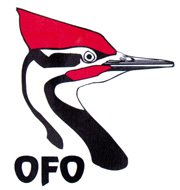Getting Started
Here are some Ontario-specific tips for learning about and enjoying birds. This information has been adapted for Ontario from the American Birding Association’s Ten Tips for Watching and Enjoying Birds During the COVID-19 Crisis.
Use binoculars or a camera. You can get close to some species, especially if you have a bird feeder to attract them, but you’ll want to eventually try to get better looks at more distant birds. Binoculars are much easier to use than a camera because you get a depth of field and your view is larger, but a camera with a zoom lens also has the advantage of letting you capture what you see to try to figure out later. You can get a pair of binoculars for relatively cheap or spend thousands of dollars. Check out the handy Guide to Binocularsfrom Audubon if you’re looking for purchasing tips. Vortex Canada is a local Ontario business that offers a great line of binoculars with excellent customer service and a fabulous warranty on their binoculars.
Check out some apps! There are some great apps that will help you identify what you are seeing. The best is Merlin — you can describe what you saw and it will give you suggestions (with photos). Merlin even lets you upload a photo you took and will suggest the identification for you, with remarkable accuracy. iNaturalist is another app that lets you upload a photo for ID. iNaturalist will also let you upload photos of other plants and animals.
Get a field guide. There are some really good field guide apps (Sibley and iBird are two popular choices) but nothing beats a physical field guide for studying and flipping pages looking for the bird you saw. In Ontario, the Peterson Field Guide to Birds of Eastern and Central North America is a great book to start with. The Sibley Field Guide to Birds of Eastern North America (or the full version) and the National Geographic Field Guide to the Birds of North America are the most popular choices among Ontario birders.
Look for help. There is a huge online community of birders around the world that are dying to share their enthusiasm and knowledge for birds with you. Check out Ontario Birds on Facebook. Another Facebook group, What’s This Bird run by the American Birding Association is dedicated to people posting photos of their mystery birds.
Join a club. Ontario has a rich history of local naturalist clubs full of people interested in birds and nature. The Ontario Field Ornithologists has over 1,700 members, organizes over 70 outings per year and more. Birds Canada is a national organization dedicated to conservation, education, and advocacy of birds in Canada. The American Birding Association is a North American-wide organization that has tons more activities related to birds and birding.
Watch and listen to the birds. There’s no better way to learn about birds and discover their secrets than to pay close attention to their behavior. Spring is the time of year many species are returning to Ontario. When they return they will be busy attracting mates, nesting, and raising young. This is also the time of year when bird song is at its peak.
Keep a list. Many birders take great satisfaction in recording when and where they see a bird. If you report your sightings to eBird, it will keep your lists for you! This is a great way to keep track of when and where you’ve seen a species before and perhaps learn when to expect them again.
Learn what to expect. The hardest part about learning birds is that there are so many, but the good news is you can narrow your search significantly with a bit of information. The eBird barchart for Ontario will show you when to expect a given species. Birds Canada also has a great Bird Identification Tool that will put together a printable guide of the most likely species in your area for a given date. Click here for the most common birds in an Ontario backyard from early May to August.
[WP]







